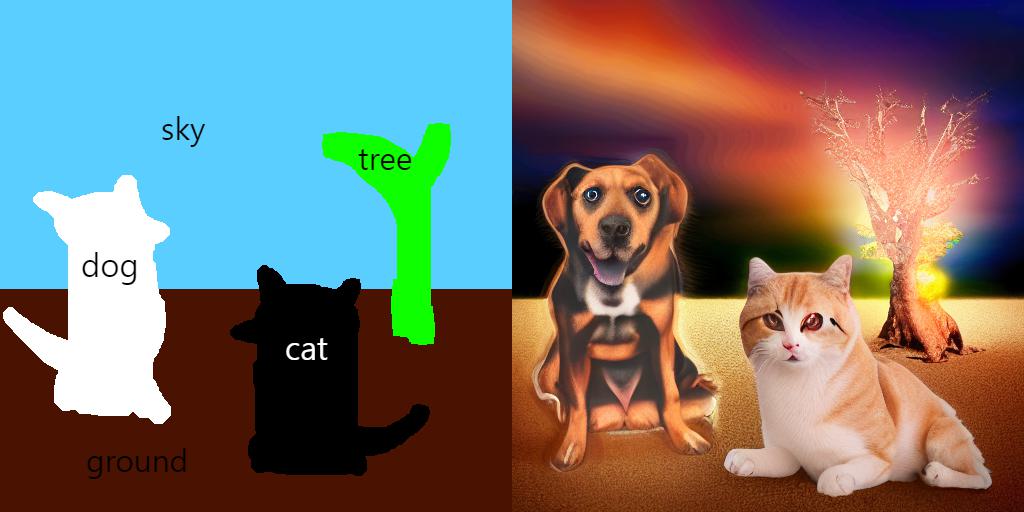"realistic photo of a dog, cat, tree, with beautiful sky, on sandy ground"
"A digital painting of a half-frozen lake near mountains under a full moon and aurora. A boat is in the middle of the lake. Highly detailed."
Very recently, researchers from NVIDIA proposed eDiffi. In the paper, they suggested method that allows "painting with word". Basically, this is like make-a-scene, but with just using adjusted cross-attention score. You can see the results and detailed method in the paper.
Unfortunately, their paper and their method was not open-sourced. Yet, paint-with-words can be implemented with Stable Diffusion since they share common Cross Attention module. So, I implemented it with Stable Diffusion.
pip install git+https://github.com/cloneofsimo/paint-with-words-sd.gitBefore running, fill in the variable HF_TOKEN in .env file with Huggingface token for Stable Diffusion, and load_dotenv().
Prepare segmentation map, and map-color : tag label such as below. keys are (R, G, B) format, and values are tag label.
{
(0, 0, 0): "cat,1.0",
(255, 255, 255): "dog,1.0",
(13, 255, 0): "tree,1.5",
(90, 206, 255): "sky,0.2",
(74, 18, 1): "ground,0.2",
}You neeed to have them so that they are in format "{label},{strength}", where strength is additional weight of the attention score you will give during generation, i.e., it will have more effect.
import dotenv
from PIL import Image
from paint_with_words import paint_with_words
settings = {
"color_context": {
(0, 0, 0): "cat,1.0",
(255, 255, 255): "dog,1.0",
(13, 255, 0): "tree,1.5",
(90, 206, 255): "sky,0.2",
(74, 18, 1): "ground,0.2",
},
"color_map_img_path": "contents/example_input.png",
"input_prompt": "realistic photo of a dog, cat, tree, with beautiful sky, on sandy ground",
"output_img_path": "contents/output_cat_dog.png",
}
dotenv.load_dotenv()
color_map_image = Image.open(settings["color_map_img_path"]).convert("RGB")
color_context = settings["color_context"]
input_prompt = settings["input_prompt"]
img = paint_with_words(
color_context=color_context,
color_map_image=color_map_image,
input_prompt=input_prompt,
num_inference_steps=30,
guidance_scale=7.5,
device="cuda:0",
)
img.save(settings["output_img_path"])There is minimal working example in runner.py that is self contained. Plase have a look!




